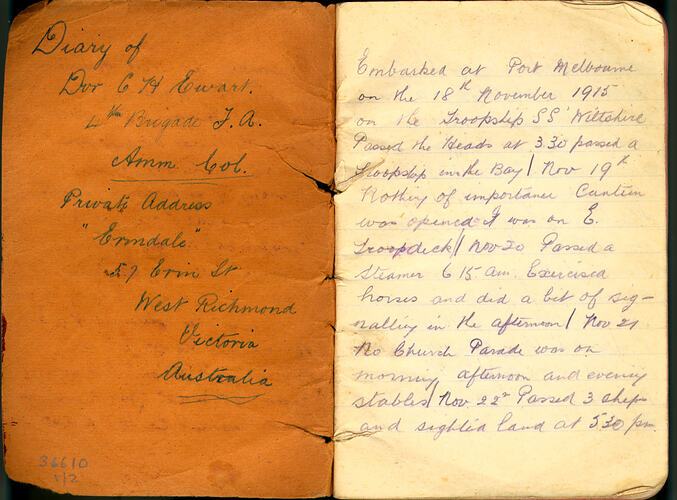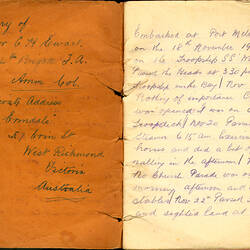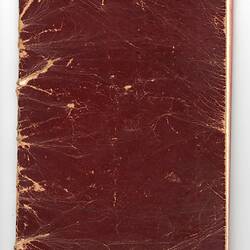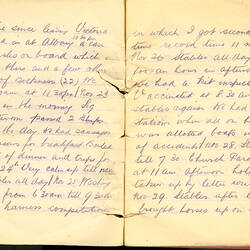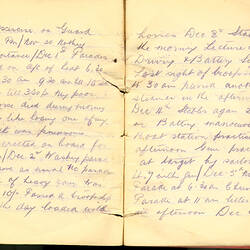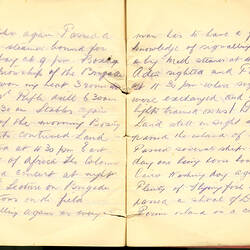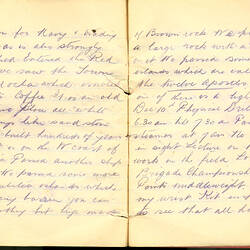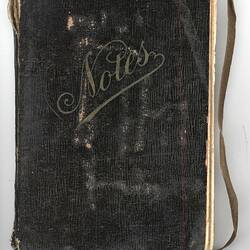Summary
Maroon-covered diary of Driver C. H. Ewart, 10th Battery, 4th FAB (Field Artillery Brigade), AIF (Australian Imperial Force), 18 November to 14 December 1915. The diary is recorded in two notebooks, of which this is the first. The diary records Driver Ewart's embarkation from Melbourne and his voyage to to Egypt. A transcription of the diary is attached.
Claude Harold Ewart, regimental number 6940, was born in Launceston, Tasmania, and was a 27-year-old driver when he enlisted in the Army on 14 August 1915. He embarked at Melbourne on the HMAT 'Wiltshire' on 18 November 1915. After three months in Egypt, he was shipped to Marseille, France, arriving 19 March 1916 and then moving to the front. On 17 February 1918 he was injured when kicked by a horse, and on 5 March 1918 he was admitted to the Military Hospital, Frensham Hill, suffering contusion of the elbow. On 31 July he was admitted to Sutton Veny. Military Hospital suffering 'ICT' of the right elbow. He was discharged 29 September 1919. In March 1945 his military records were amended to read 'Died after Discharge'.
During World War I, military activities at Sutton Veny included a Camp Hospital, 1st Training Battalion, 1st Command Depot and no.2 Concentration Group. An Australian War Commission graveyard is now located there.
Physical Description
Diary with plain maroon cover, faint lined, containing handwritten entries in purple pencil.
Significance
Personal diaries provide a valuable insight into the daily life in the Australian armed forces. Some diarists record the mundane routines of daily life in military camps, or ports visited during voyages on transport ships; others provide graphic details of battles and medical treatments. Welcome letters and parcels from home are described, and friendships are recorded. Many soldiers complain about the food, or record welcome or festive meals such as Christmas. The diaries show many of the ways servicemen and women coped with the discipline, stress and tragedy of war.
More Information
-
Collection Names
Military Memorabilia Collection, Returned and Services League (RSL) Collection
-
Collecting Areas
-
Acquisition Information
Donation from Victorian Branch, Returned & Services League of Australia Limited (RSL), 24 Feb 1986
-
Author
Dvr Claude H. Ewart - Australian Imperial Force (AIF), Somme, France, 1915-1917
Written in France & England. -
Organisation Named
-
Organisation Named
-
Organisation Named
-
Place & Date Inscribed
57 Erin St, West Richmond, Greater Melbourne, Victoria, Australia, 18 Nov 1915
-
Individuals Identified
EWART, C. H. (DVR)
-
Format
Book
-
Language
English
-
Inscriptions
[Extensive hand-written text]
-
Classification
-
Category
-
Discipline
-
Type of item
-
Overall Dimensions
105 mm (Width), 6 mm (Depth), 155 mm (Height)
-
References
Ewart's war service records are held at the National Archives of Australia - Series accession number B2455/1, Barcode 3545448.
-
Keywords
Australian Army, Australian Military Forces, Belgian Communities, Belgian Immigration, Conscription, Horses, Military Forces, Military Memorabilia, Wars & Conflicts, World War I, 1914-1918, Making History - War Diaries and Correspondence
